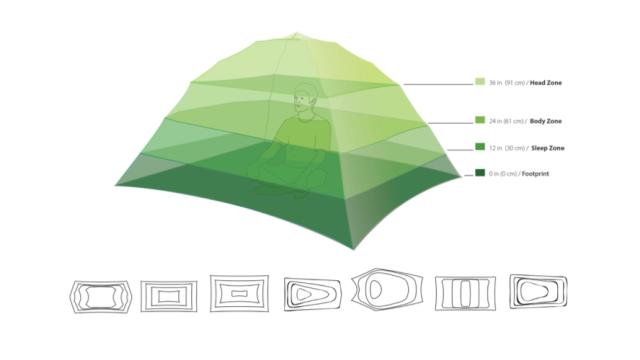How can you compare the interior volume and shape between two or more tents without setting them up side-by-side? Until now, you couldn’t, but a new system devised by New Hampshire-based Nemo Equipment aims to change that.
“An A-Frame tent only has headroom at the centre, while a dome tent of the same floor area will allow the user to sit up almost anywhere, and thus, has more livable space,” explains the company.
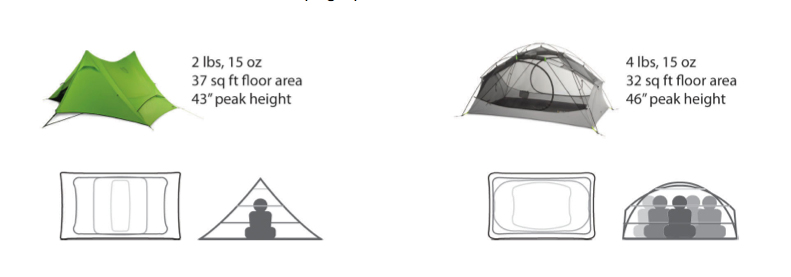
Here you can see the conundrum. Two tents with similar specs offer vastly different interior spaces. The one on the left only has enough room to sit in the very center, while the one on the right is far more livable; something not communicated in floor area or peak height numbers.
Previously, tent space was only defined by the floor area, in square feet or square metres, and the peak interior height, in inches or centimetres. As you can see in the above image, those two numbers can be very deceptive, giving consumers an image of equivalency when, in fact, two tents with similar areas and peak heights can offer vastly different internal space. Space that defines how you sit, sleep and move inside.
“Providing total interior volume is not a good indicator of livable space because this information doesn’t tell you how the volume is distributed throughout the tent,” explains Nemo. “The most useful information to a consumer is communicating where they can sleep, sit, kneel or stand in a tent. Retailers struggle with disproportionately high returns of lightweight tents because consumers often don’t understand the amount of livable space associated with a tent.”
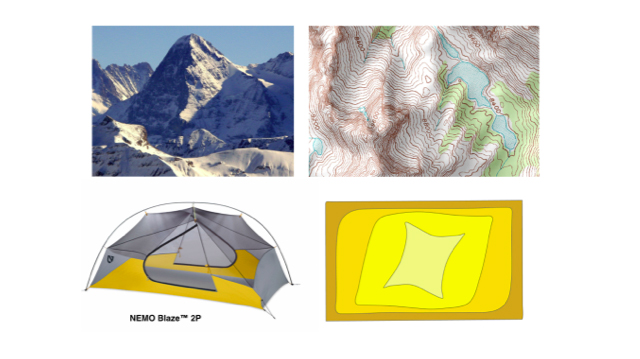
So what’s the solution? Nemo has devised a system called, “Tent Topographic Measuring” that it’s been using for the last year and which it hopes can roll out across the entire outdoor industry. In it, the tent is broken up into 30cm tall “elevations”, much like the topographic terrain maps outdoorsy types will already be familiar with.
The system is intended to be used by manufacturers, retailers and the media to create a standardized methodology for communicating tent interior space. To measure the tent, Nemo specs a pole with adjustable heights that holds a high-contrast pen at those heights, that then traces the interior perimeter.
The line created at ground level is the foot print, the one at 12 inches (30cm) is defined as the “sleep zone;” 24 inches (60cm) is the “body zone;” and 36 inches (90cm) is the “head zone”.
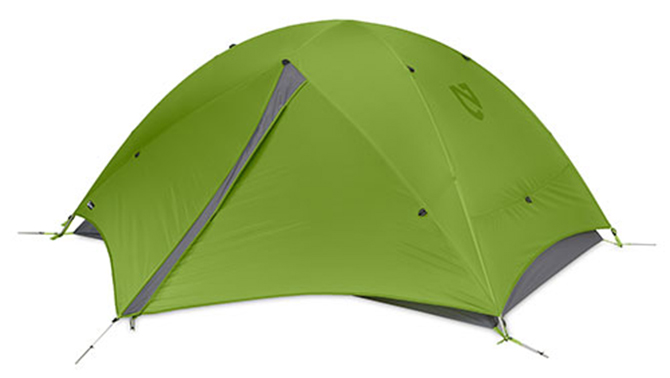

Can you tell the difference between these two 2p backpacking tents?
The result is a map-like top-down view of a tent that actually gives you useful insight into its interior space and layout. You can see if you’ll be able to sit up in only a single area, or across a broad space and if you’ll be able to sleep with room to move or hemmed in by slanted walls; all information consumers lacked before. Most importantly, you’ll be able to quickly and intuitively compare the space offered by two or more tents, better informing your online or in-store purchase.
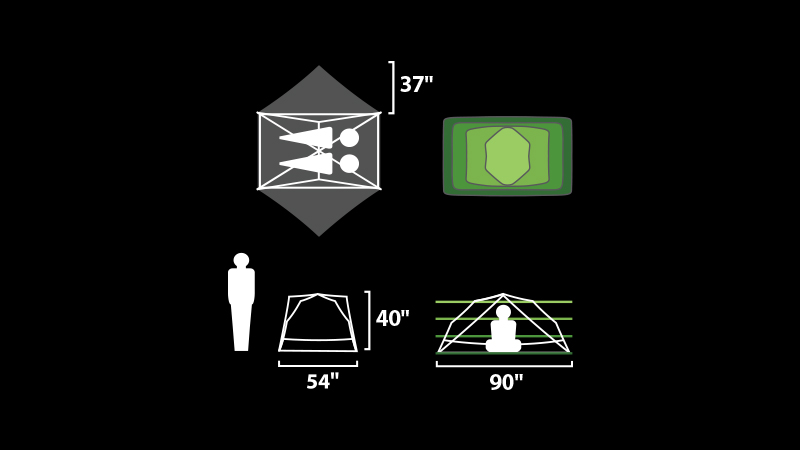
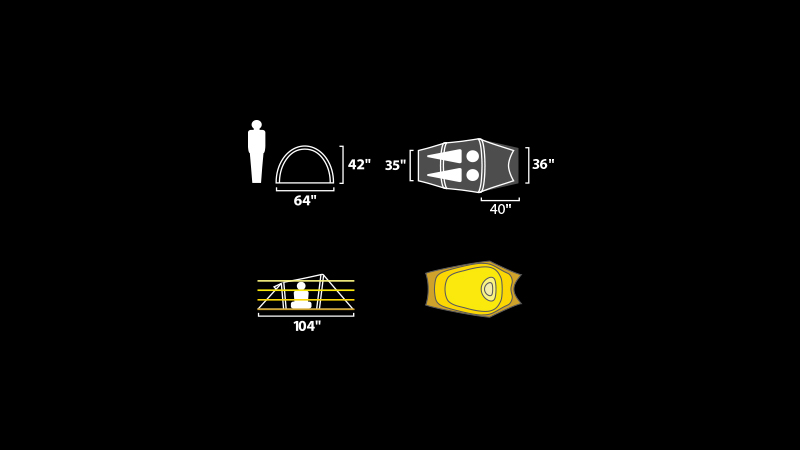
Bet you can now.
Nemo is lobbying the industry to adopt this method, so hopefully you’ll be able to use it in the near future. Until then, we’ll be using it to inform future tent reviews.
